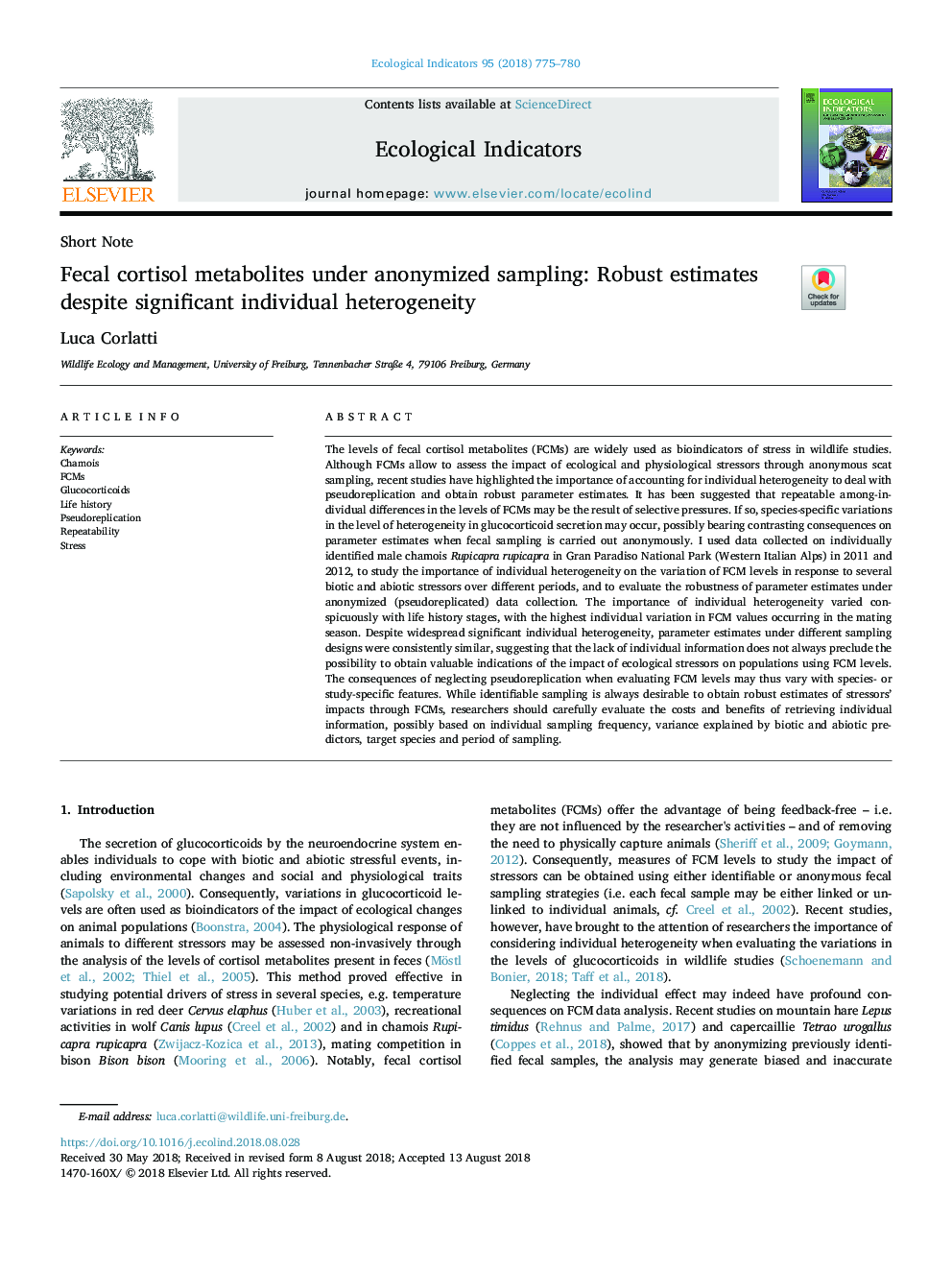| Article ID | Journal | Published Year | Pages | File Type |
|---|---|---|---|---|
| 8845043 | Ecological Indicators | 2018 | 6 Pages |
Abstract
The levels of fecal cortisol metabolites (FCMs) are widely used as bioindicators of stress in wildlife studies. Although FCMs allow to assess the impact of ecological and physiological stressors through anonymous scat sampling, recent studies have highlighted the importance of accounting for individual heterogeneity to deal with pseudoreplication and obtain robust parameter estimates. It has been suggested that repeatable among-individual differences in the levels of FCMs may be the result of selective pressures. If so, species-specific variations in the level of heterogeneity in glucocorticoid secretion may occur, possibly bearing contrasting consequences on parameter estimates when fecal sampling is carried out anonymously. I used data collected on individually identified male chamois Rupicapra rupicapra in Gran Paradiso National Park (Western Italian Alps) in 2011 and 2012, to study the importance of individual heterogeneity on the variation of FCM levels in response to several biotic and abiotic stressors over different periods, and to evaluate the robustness of parameter estimates under anonymized (pseudoreplicated) data collection. The importance of individual heterogeneity varied conspicuously with life history stages, with the highest individual variation in FCM values occurring in the mating season. Despite widespread significant individual heterogeneity, parameter estimates under different sampling designs were consistently similar, suggesting that the lack of individual information does not always preclude the possibility to obtain valuable indications of the impact of ecological stressors on populations using FCM levels. The consequences of neglecting pseudoreplication when evaluating FCM levels may thus vary with species- or study-specific features. While identifiable sampling is always desirable to obtain robust estimates of stressors' impacts through FCMs, researchers should carefully evaluate the costs and benefits of retrieving individual information, possibly based on individual sampling frequency, variance explained by biotic and abiotic predictors, target species and period of sampling.
Related Topics
Life Sciences
Agricultural and Biological Sciences
Ecology, Evolution, Behavior and Systematics
Authors
Luca Corlatti,
